I had another great birding photography/observation day in the yard on Tuesday, October 27, 2020. I had many of the same birds/species show up but in addition I had a few additional visitors.
A Brown creeper usually makes a couple of trips today to its favorite bird bath at the far edge of the yard. I like this photo for several reasons… it shows the bird against colorful madrone tree bark, it shows the bird’s gigantic foot span, and it shows the bird’s stiff tail feathers which, like woodpeckers and other climbing birds, allow it to brace itself against a tree.
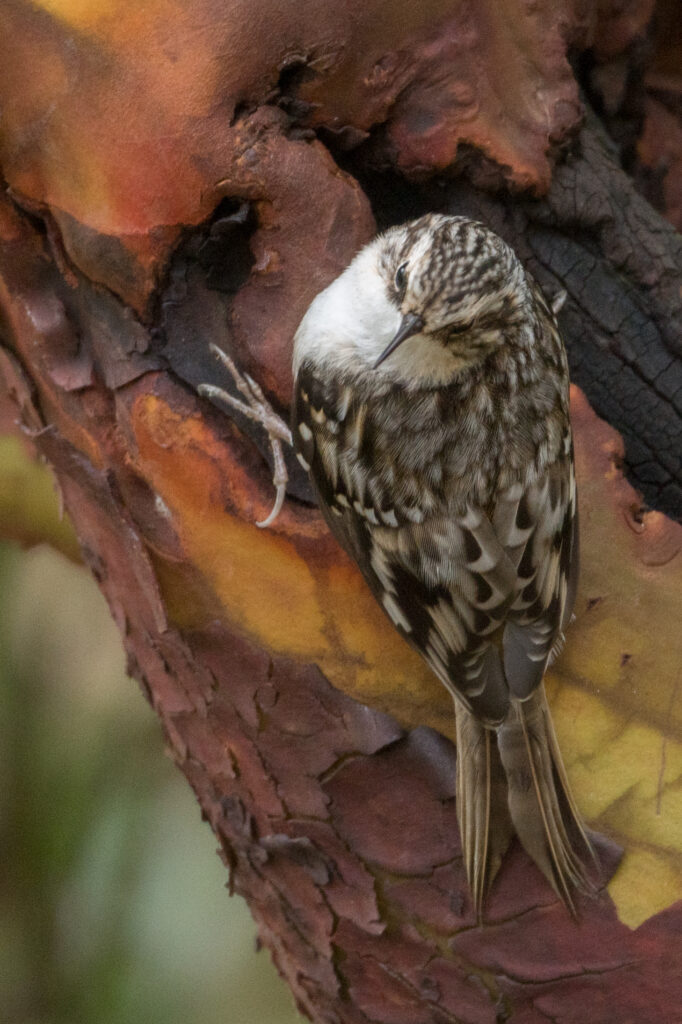
We have more than our share of House sparrows due in part to neighborhood residents who have bird houses with entry holes that are too large to exclude them. A 1 1/8″ diameter (or smaller) hole will usually exclude House sparrows.
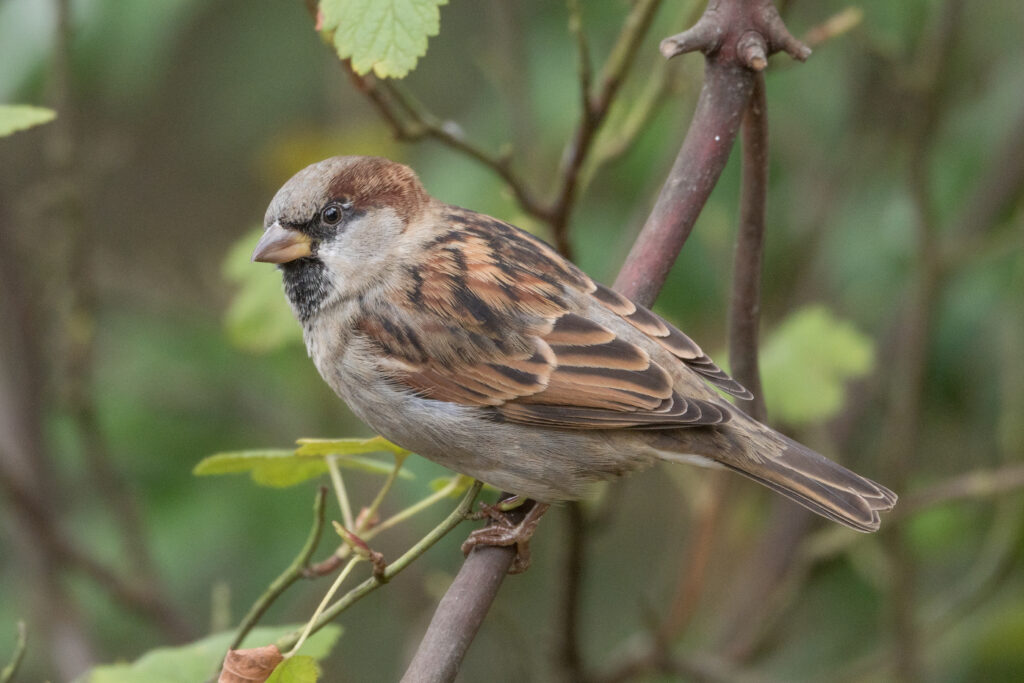
I mentioned in my last post that I failed to obtain a photo of our male Hairy woodpecker visitor. I was more successful on this day. Note the size of the beak, one of the best ways to distinguish this bird from its smaller lookalike, the Downy woodpecker.
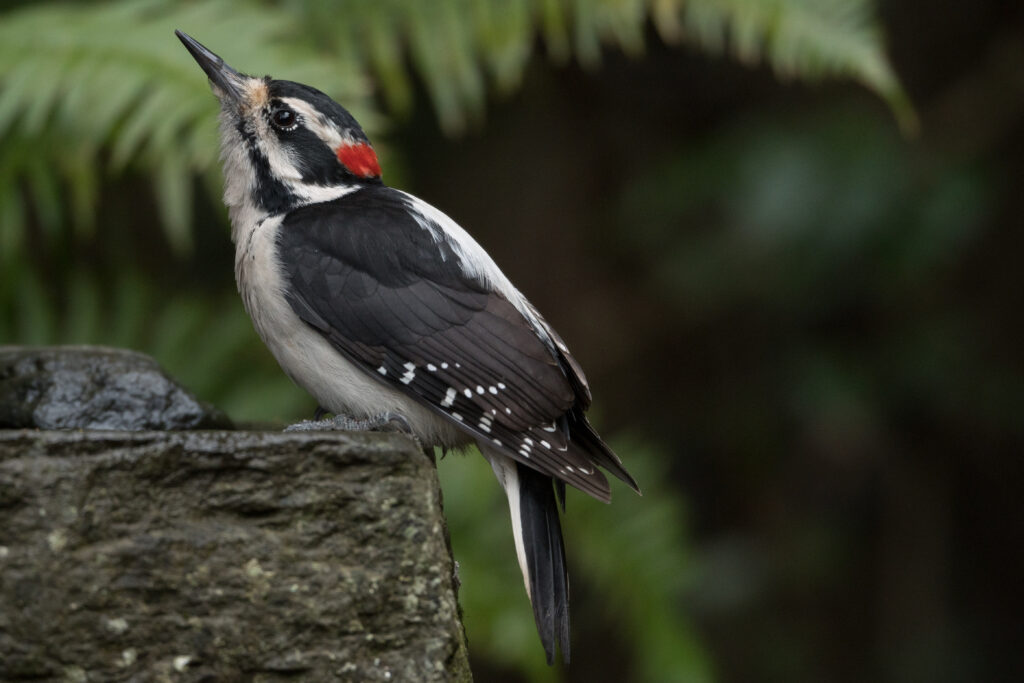
You can see how similar these two birds are in terms of markings Here’s a male Downy woodpecker.
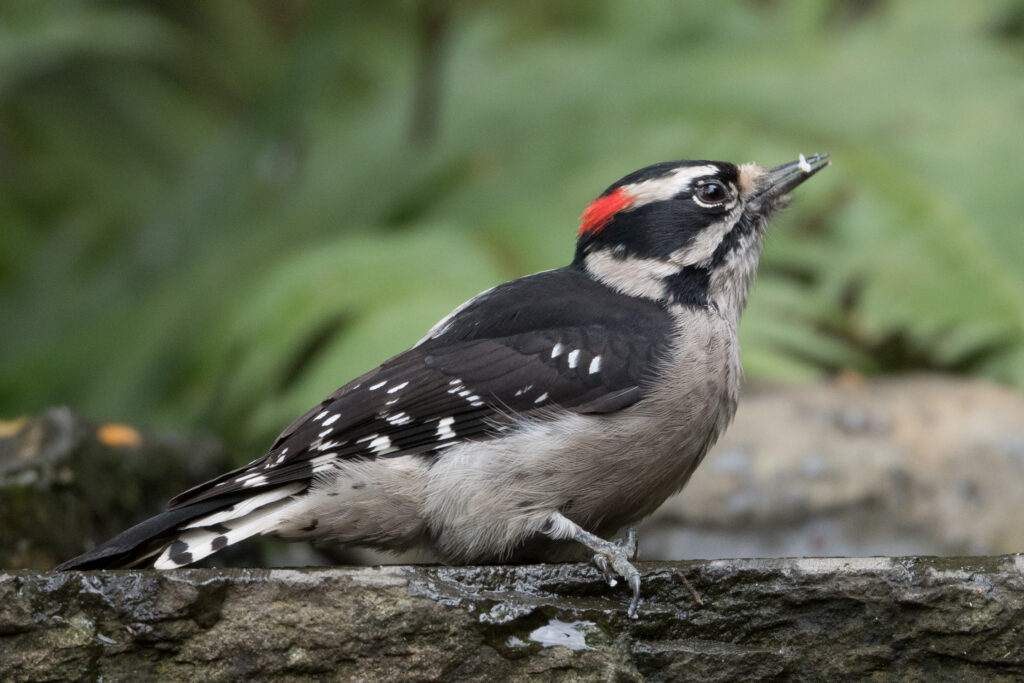
Here’s a Ruby-crowned kinglet, apparently a female, availing itself from a dwindling supply of evergreen huckleberries. The Ruby-crowned kinglets are significantly rarer in our yard than their cousins, the Golden-crowned kinglets.

And a little fuller view of the bird…
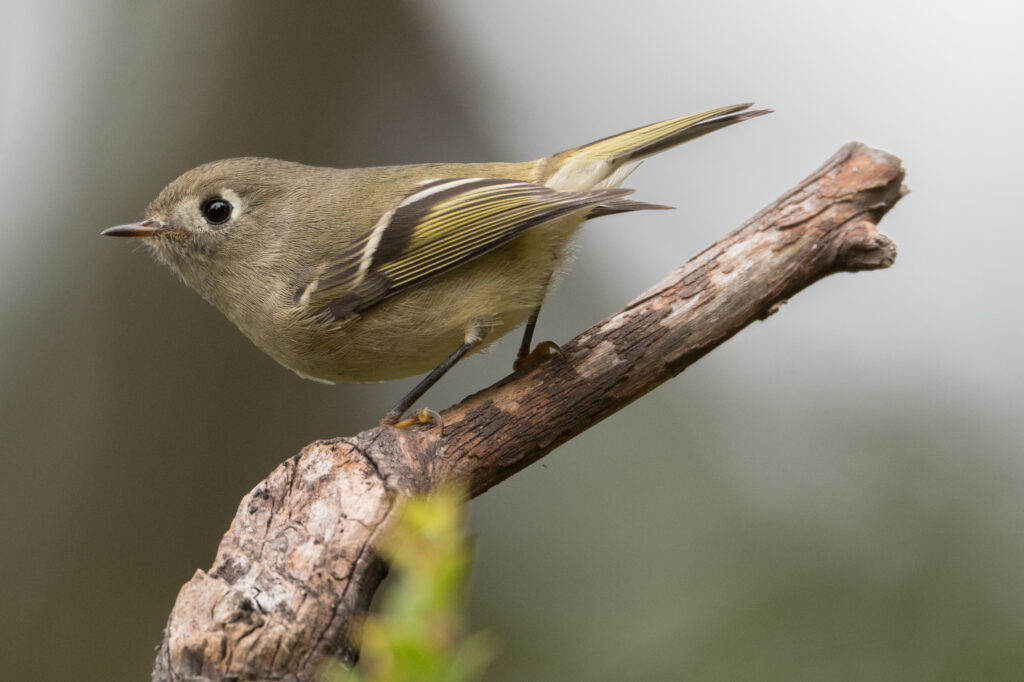
The Hermit thrush was back in the yard again, a rare and welcome visitor.
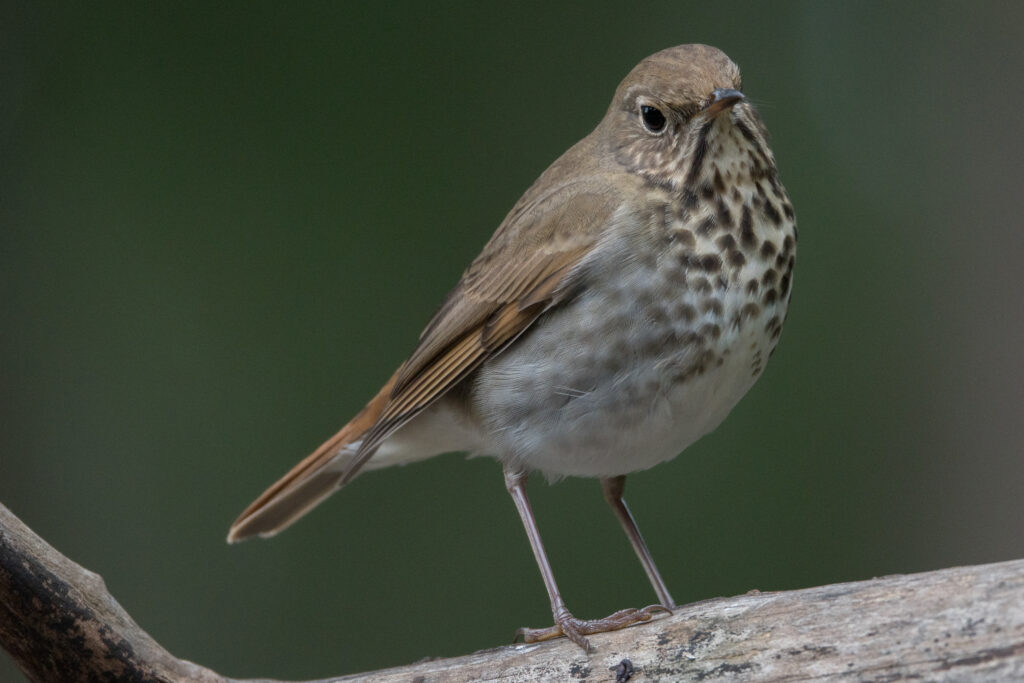
There are probably other ways to separate identification of the Hermit and Swainson’s thrushes, but I rely to some extent on the season (spring/summer for the Swainson’s and fall/winter for the Hermit’s) but mostly on the contrasting reddish color of the bird’s tail which can be seen clearly in this second photo of the Hermit thrush. (I’m not sure my high school English teacher would have approved of the foregoing sentence!)
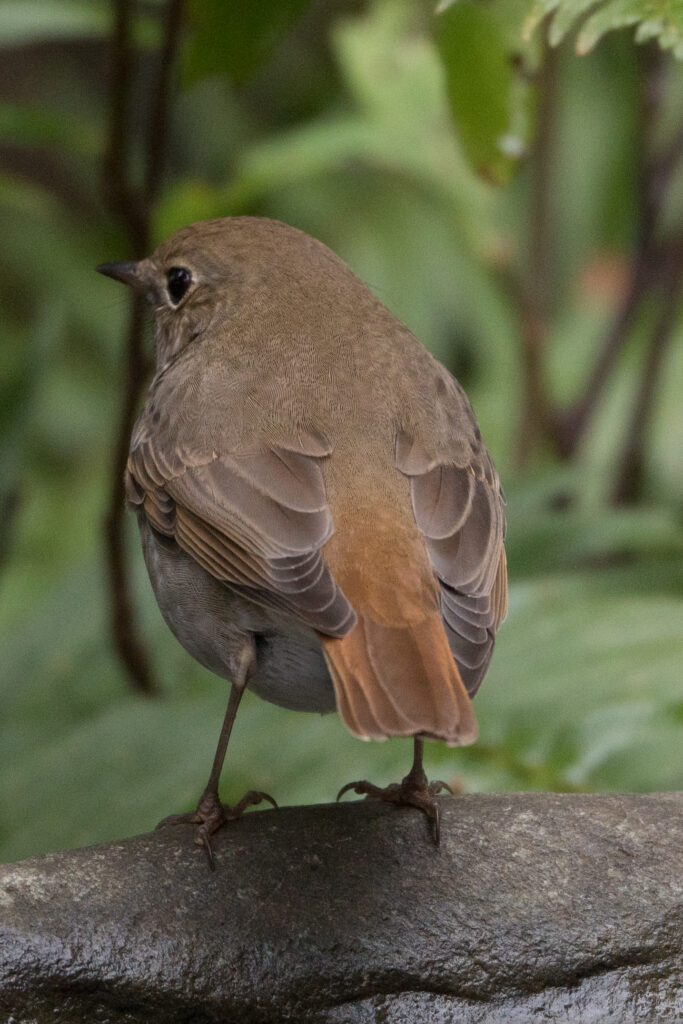
Moving on, here’s the same Song sparrow with the truncated mandible I’ve shown before. It seems to be doing quite well despite the handicap. It’s got a friend in the yard with a normal beak, the only way I can tell that we have at least two.
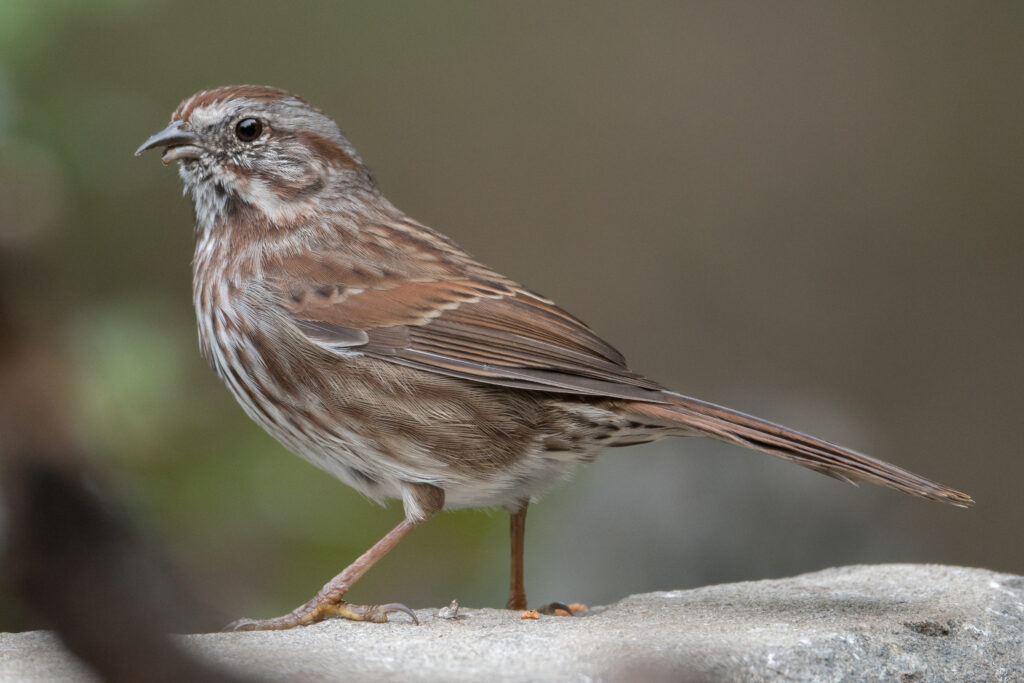
And now for the star of this post. It’s NOT this Bewick’s wren pictured below, although I’m always happy to get a photograph of this bird.
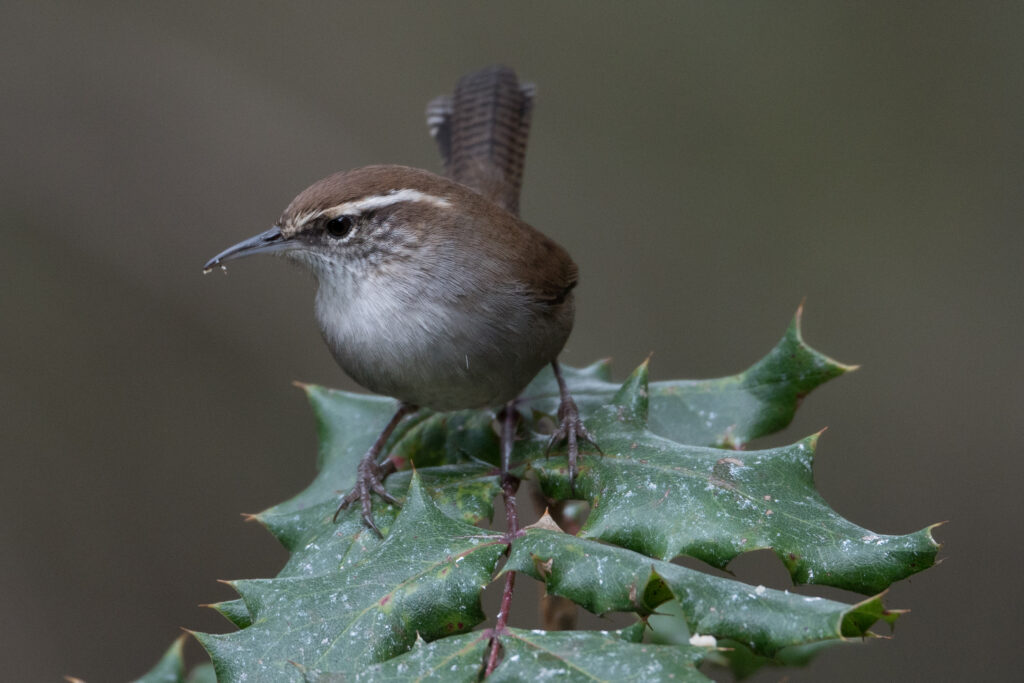
It’s this rare (for our yard), diminutive, secretive and very active visitor that engaged in a prolonged bath only a few feet away from me… a Pacific wren. This is the first time that I can remember seeing a wren of any species bathe in one of our water features, and I obtained a wealth of photos! This session probably provided my best ever Pacific wren photos!
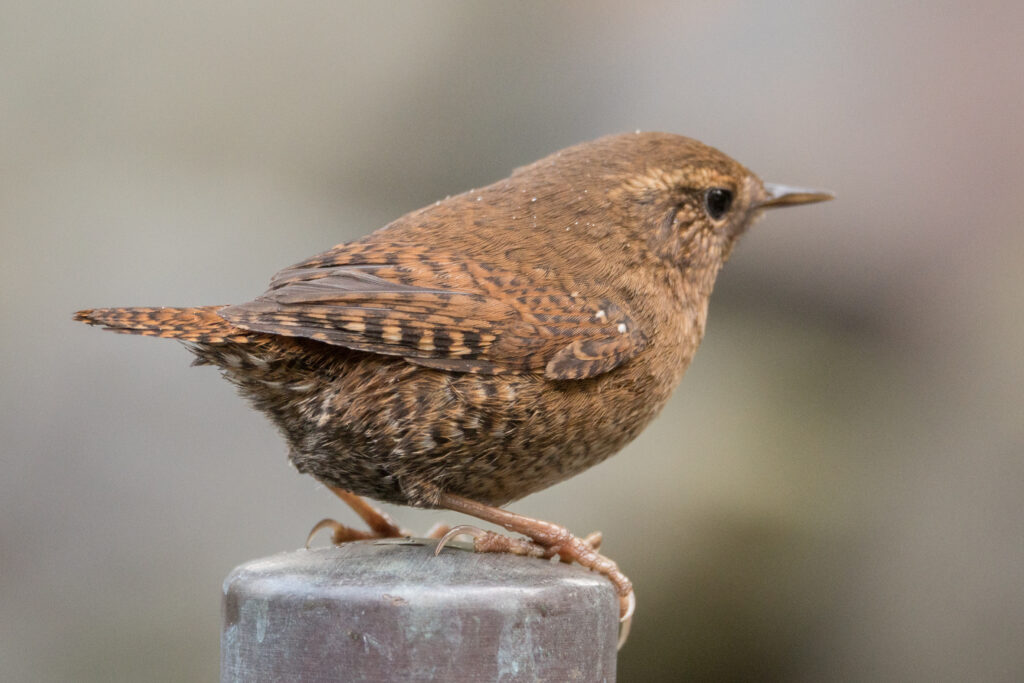

While I was concentrating on photographing the wren a male Red crossbill hurried into the watercourse and made a quick exit before I could get a photo. When there are a lot of birds in the yard there’s a lot of intense identification and prioritization taking place in addition to photography, and it doesn’t help that almost all the birds are moving around. If I thought that anyone was interested I could tell how we handle this problem at my sister’s place in Texas, but I’ll save that for another time.
